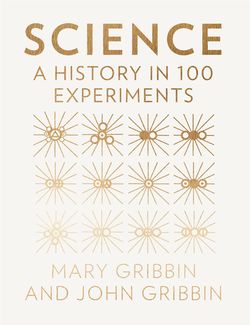Читать книгу Science: A History in 100 Experiments - John Gribbin - Страница 8
Оглавление| No. 3 | THE EYE AS A PINHOLE CAMERA |
After the decline of classical civilization and before the European Renaissance, scientific knowledge was preserved and improved in the Arabic world. Greek texts were translated into Arabic and later from Arabic into Latin, which is how they became known to Europeans. But the Arabs also carried out original scientific work. The greatest scientist of the Middle Ages, the ‘Arabic Newton’, was Abu Ali al-Hassan ibn al-Haytham, known for short as Alhazen, who lived from about 965 to 1040 and carried out experiments in optics on either side of the year 1000. His influential book was published in Europe in Latin as Opticae Thesaurus (The Treasury of Optics) in 1572, five centuries after his death. It was a major influence on the ‘natural philosophers’ who started the scientific revolution in Europe.
© Science Source/Science Photo Library
Abu Ali al-Hassan ibn al-Haytham (known as Alhacen, or Alhazen) (965–1040).
Alhazen’s key insight was that sight is not the result of some influence reaching out from the eyes and sensing the world outside, but is caused by light entering the eye from outside. In his own words, ‘from each point of every coloured body, illuminated by any light, issue light and colour along every straight line that can be drawn from that point’. This was not an entirely original idea. Philosophers had discussed whether vision was caused by an outward influence (emission) or an inward influence (intromission) since the time of Euclid and Aristotle. But Alhazen put together a complete, coherent package of ideas which he then proved correct by experiments based on the idea of a ‘camera obscura’ (literally, a ‘dark room’; the Latin term is the source of our modern word camera). In a dark room with a heavily curtained window, if a tiny hole is made in the curtain on a sunny day an image of the outside world will be projected, upside down, on the wall opposite the window. The phenomenon had been known to the ancients, but Alhazen was the first person to describe it clearly and explain what is going on.
Alhazen realized that light travels in straight lines. Light from the top of a tree in the garden outside the window of the camera obscura will go through the hole in the curtain to the bottom of the wall opposite. Light from the base of the tree will go through the hole and up to the top of the wall. Straight lines from other points on the tree, and from other objects outside the window, go through the hole in straight lines to corresponding places on the wall to make the image.
He might have stopped there. Before Alhazen, those philosophers who thought about such things at all, such as Euclid and Aristotle, usually stopped at this stage, without actually doing experiments to test their ideas. They tried to persuade people that they were right by logic and reason, without getting their hands dirty (Archimedes, of course, was a notable, but rare, exception). What made Alhazen a real scientist was that he went a stage further. It was one thing to show how a camera obscura worked, but something else to prove that the eye works in the same way. A thousand years ago, many people would have assumed that living things were not subject to the same rules as inanimate objects. To test whether this was so, he took an eyeball from a bull, and carefully scraped away at the back of it, thinning it down until he could see on the back of the eyeball an image of what was in front of the eye, almost exactly like a tiny camera obscura. He had proved that light travels in straight lines, shown how a camera obscura works, and established that no mysterious life force is needed to explain vision, just the same physical laws that apply to non-living things. And he had done so using what became known (eventually) as the scientific method – thinking up ideas (hypotheses) about how the world works based on observation, then testing those ideas by experiment. Today, an idea that passes the experimental test is upgraded to the status of a theory, while those that fail the experimental test are discarded. As the twentieth-century physicist Richard Feynman pithily put it, ‘if it disagrees with experiment then it is wrong’. Because he understood this and put it in to practice, Alhazen was arguably the first modern scientist.
© Science Museum/Science & Society Picture Library
Alhazen’s representation of the eye as a ‘camera’.
Alhazen did much more than this. He wrote on a variety of scientific and mathematical topics, and his optical work alone filled seven books. He realized that light does not travel at infinite speed, although it is very fast, and he explained the illusion that a straight stick looks bent when one end is placed in water because light travels at different speeds in water and in air. He studied lenses and curved mirrors, working out how the curvature makes them focus light. But his place in history has been secured by how he worked as much as by what he studied. It was the true beginning of experimental science.
